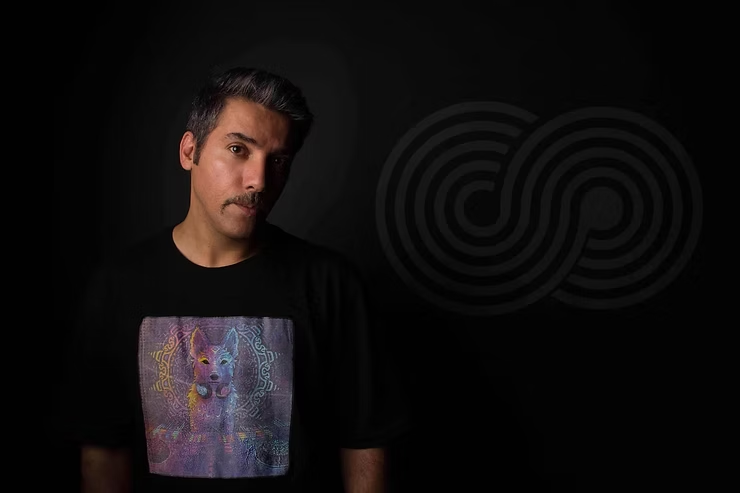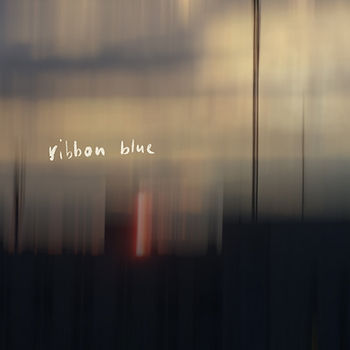
Ace of Hertz, the brainchild of Riccardo Coppola, takes listeners on a cosmic journey with his debut album “Astrarium.” This instrumental electronic collection is a fascinating exploration of synthesizers, both digital and analog, that spans multiple genres and styles. The album consists of eight tracks, each uniquely crafted to evoke a sense of space exploration and discovery.
The opening track, “One (A Start),” sets a mysterious atmosphere with spoken words that hint at the vastness of space. It employs the sonification of a neutron star’s spectrometer as a percussive bassline, layered with beeps from Apollo missions and countdowns, creating an eerie yet captivating introduction. This track seamlessly transitions into “Nova Atlantis,” an electronic chill piece that begins with a gentle piano chord progression. As the track progresses, it introduces beats and a soothing melody, building into a rich, layered soundscape.
“The Message” follows with a more experimental and avant-garde approach. This piece is part of a two-track suite inspired by the Arecibo message sent to space in 1974. It features wavefolding and destruction of digital synth sounds, accompanied by a sonar-like tone and an echoed, distorted lead synth. The suite continues with “Arecibo,” which provides a glitchy response to “The Message.” This track stands out with its asymmetric, percussive bridge section, contrasting the experimental elements with a modern, energetic beat.
“Vela” captures the obsessive rhythm of the Vela pulsar, the fastest-spinning object in the known universe. This track, created entirely using software wavetable synthesizers, builds an uptempo drum’n’bass structure that is both ethereal and danceable. The progression is interrupted by a melancholic yet dreamy opening led by a synthetic piano, adding a layer of emotional depth to the album.
“A Good Picture” is a notable experimentation with vintage-sounding synths and irregular rhythmic progressions. It randomly triggers twelve different digital synthesizers and ten glitch sound samples at every beat, resulting in a complex and intriguing soundscape. This track is followed by “Tyr,” named after the Norse god of the daylight-sky. Composed in Göteborg, it acts as the album’s techno powerhorse with its obsessive landscape of strange basses, storm sounds, distant choirs, and an abundance of claps.
The album concludes with “Godspeed (A Reprise),” a small suite that recollects themes from “Arecibo,” “Vela,” and “A Good Picture.” It employs a lo-fi piano sound and ends with a deliberate 8-bit feeling, creating a sense of closure and completing the album’s thematic circle.
Ace of Hertz, inspired by a decade-long fascination with computer music, ambient, and synthwave, as well as a lifelong obsession with dramatic soundtracks, has created a remarkable debut with “Astrarium.” The album’s experimental nature and diverse influences—from lush synthpop and subtle electronic bridges in prog suites to big, scary synthesizer sounds and minimalist 8-bit textures—make it a compelling listen for fans of quiet, reflective electronica. The visual concept of a deck of cards, with waveforms representing electronic music’s fundamental building blocks, ties together the album’s theme of space exploration, further enhancing the listener’s experience.
In summary, “Astrarium” by Ace of Hertz is a mesmerizing debut that showcases Riccardo Coppola’s talent for blending various electronic styles into a cohesive and exploratory journey. Each track offers a unique sonic experience, making the album a must-listen for anyone interested in the frontiers of electronic music.
#AceOfHertz #Astrarium #ElectronicMusic #Synthwave #Ambient #ExperimentalMusic #Synthesizers #SpaceExploration #NewAlbum #MusicReview #DigitalSynths #AnalogSynths #InstrumentalMusic #ChillBeats #AvantGarde #EDM #PianoMusic #Techno #DebutAlbum #Soundscapes #MusicProduction #NASA #SpaceMusic #ScienceFiction #MusicLovers







